Edition 2021 – Les artistes et leurs oeuvres
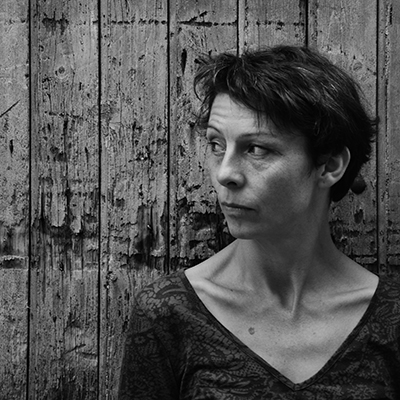
Awena Cozannet
Ce qui nous rassemble, 2019
Cinq formes minérales et organiques composent un paysage, lac en absence et monumentalité de la montagne. Ce qui nous rassemble invite à réfléchir à notre histoire commune, à ce qui nous lie et nous structure. Elle interroge la notion de frontière physique et la notion d’écart entre soi et l’autre, ce qui définit notre identité. Elle questionne l’urgence du déplacement et la nécessité du mouvement à l’aune de l’actualité migratoire et climatique.
Five mineral and organic forms make up a landscape, a lake in absence and the monumentality of the mountain. What brings us together invites us to reflect on our common history, on what binds and structures us. It questions the notions of physical border and the gap between oneself and the other, which defines our identity. It also questions the urgency of displacement and the necessity of movement in the light of current migration and climate.

Martine Feipel & Jean Bechameil
Moon in the Tree, 2018
En partant d’objets courants et communs à chacun, les artistes nous entrainent dans un univers bancal où tout semble en suspend dans une étrange intemporalité. Les objets sont détournés de leurs usages et de leur sens pour proposer des situations décalées, mais fondées sur la modification de leur matérialité et de leur forme. Dès lors, ils sont comme des éléments de mémoire tangible d’où s’échappent tout contrôle.
Starting with common objects, the artists take us into a wobbly universe where everything seems to be suspended in a strange timelessness. The domestic and common objects are diverted from their uses and their meaning to propose shifted situations but based on the modification of their materiality and their form. Therefore, they become elements of tangible memory from where all control is escaping.
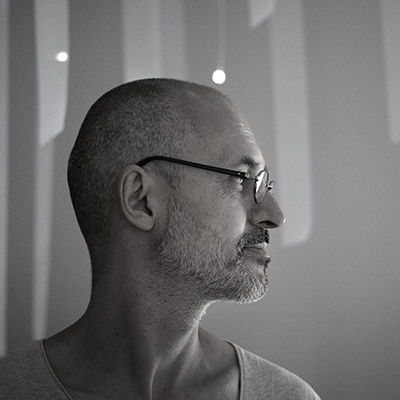
Stéphane Guiran
Mémoires d’ormes, 2021
Le rêve des neiges éternelles II, 2021
Les œuvres de Stéphane Guiran, inspirées de la nature, nous interrogent sur notre propre nature. Ses sculptures, souvent faites à partir de cristaux et de minéraux, jouent sur la force contenue dans la fragilité. Elles mettent en regard les matériaux créés par la nature et ceux faits par l’homme, en particulier à travers son travail sur la mémoire industrielle des résidus de cristalleries. De ce dialogue entre la nature et nos productions industrielles nait une poésie de la transformation, de la mutation, comme un nouveau langage à explorer.
Stéphane Guiran’s works, inspired by nature, ask us about our own nature. His sculptures, often made from crystals and minerals, play on the strength contained in fragility. They compare the materials created by nature and those made by man through his work on the industrial memory of crystal factory waste. From this dialogue between nature and our industrial productions comes a poetry of transformation, of mutation, like a new language to explore.
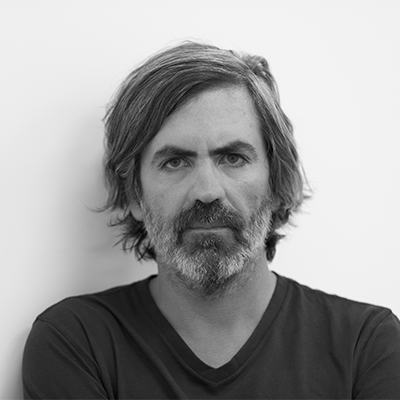
Gonzalo Lebrija
Cubo Torcido, 2017
Gonzalo Lebrija est co-fondateur
et directeur de OPA – Oficina para Proyectos de Arte – un lieu d’exposition à Guadalajara, l’un des plus importants en Amérique Centrale.
L’artiste explore dans son œuvre les notions de temps, de liberté, de jeu et leur relation au pouvoir. Cubo Torcido est une œuvre qui synthétise, dans un dessin bidimensionnel, une transformation supposée du temps et de l’espace par un geste subtil.
Gonzalo Lebrija is co-founder and director of OPA – Oficina para Proyectos de Arte – an exhibition space in Guadalajara, one of the most important in Central America. In his work, the artist explores the notions of time, freedom, play and their relationship to power. These questions give rise to actions and gestures that give his practice a performative dimension. Cubo Torcido is a work that synthesises, in a two-dimensional drawing, a supposed transformation of time and space through a subtle gesture.

Quentin Lefranc
Action Office, 2021
Conçue comme un lieu d’étude, l’architecture sert de cadre, de territoire, de terrain de jeu pour les propositions de Quentin Lefranc. Placées à la confluence de plusieurs pratiques, ses pièces fonctionnent comme des parenthèses ouvertes dans l’espace. Action Office a été réalisée à la suite d’une résidence avec l’entreprise LSB la salle blanche. Entreprise qui conçoit et aménage des espaces de soins aseptiques pour les milieux hospitaliers, des laboratoires et salles à atmosphères contrôlées pour l’industrie pharmaceutique.
Conceived as a place of study, architecture serves as a framework, a territory, a playground for Quentin Lefranc’s proposals. Placed at the confluence of several practices, his pieces function as open parentheses in space. Action Office was created following a residency with the company LSB la salle blanche. This company designs and fits out aseptic care spaces for hospitals, laboratories and controlled atmosphere rooms for the pharmaceutical industry.

Charles Le Hyaric
La nébuleuse des dryades, 2021
Nichée au creux des arbres, La nébuleuse des dryades s’intègre au lieu qu’elle investit. Réalisée principalement en filasse, sa forme évoque tout aussi bien une créature onirique, une bête ou une carcasse archaïque aux origines indéfinissables. Le spectateur peut s’approcher de l’œuvre et découvrir un tout autre univers : un monde organique, biologique, cellulaire, rendu possible grâce à la lumière ondulante qui traverse le maillage de la structure ainsi que le feuillage des arbres dans lesquels la sculpture prend place.
Nestled in the hollow of the trees, La nébuleuse des dryades is integrated into the place it occupies. Mainly made of filament, its shape evokes a dreamlike creature, a beast or an archaic carcass of indefinable origins. The spectator can approach the work and discover a completely different universe: an organic, biological, cellular world, made possible by the undulating light that passes through the mesh of the structure as well as the foliage of the trees in which the sculpture is set.
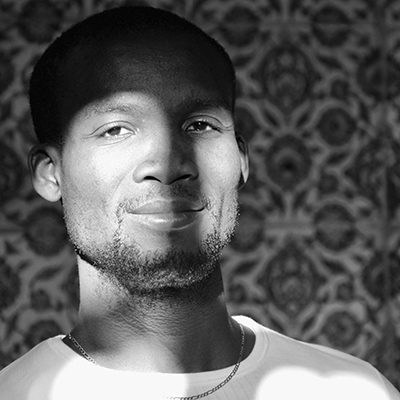
Kokou Ferdinand Makouvia
Akossiwa,
le temps d’une routine, 2017
L’artiste s’enquiert inlassablement de toute la matière qui compose l’existant. Dès lors, il se conditionne à une collaboration étroite avec la matière dans tous ses états : il fait de son énergie une âme sœur dans le dialogue, il se confronte à sa substance incarnée comme une réalité persistante avec laquelle il est vital d’apprendre à composer, il l’utilise comme un médium pour communiquer avec l’invisible. Tant dans sa pratique de la sculpture que de la performance, il est l’intercesseur d’une dichotomie entre le faire et le laisser-faire.
Through his practice, the artist tirelessly conducts an inquiry into all of the materials that make up our world, necessarily working in close collaboration with them and their various qualities. He engages in an impassioned dialogue with the energy of matter, confronting its embodied substance as a vital force with which to compose, a medium through which he can communicate with the invisible. Through his sculptural work and his performances, he acts as an intercessor in a dichotomy between shaping forms and letting forms take shape.

Juliette Minchin
Omphalos, 2020
Omphalos apparaît comme une architecture sacrée, un sanctuaire imaginaire. L’oeuvre s’inspire des traditions qui célèbrent le passage du temps au moyen de la cire. Elle emprunte son imaginaire à l’architecture des mausolées. En référence aux bandelettes de laine qui protégeaient l’Omphalos dans l’Antiquité grecque, Juliette Minchin enveloppe partiellement la structure de grands lambeaux de cire.
Omphalos appears as a sacred architecture, an imaginary sanctuary. The work is inspired by traditions that celebrate the passage of time using wax. She borrows her imagination from the architecture of mausoleums. In reference to the woolen bands that protected the conic stone Omphalos in ancient Greece, Juliette Minchin partially envelops the structure in large shreds of wax.

Aurélie Pétrel
Tokyo Bay, 2011
La pratique photographique d’Aurélie Pétrel interroge le statut de l’image, son utilisation ainsi que les mécanismes de sa production. Ancrées dans la durée, ses recherches visent à ramener la prise de vue au centre de la réflexion multisensorielle à l’aide de dispositifs spatiaux. L’artiste pose ainsi la question de la mutation-mutabilité d’une image, son potentiel de fractalisation, non seulement en soi mais aussi dans ce qu’elle peut provoquer comme trouble en son expérience de pluriperception.
Aurélie Pétrel’s photographic practice questions the status of the image, its use and the mechanisms of its production. Rooted in duration, her research aims to bring the act of taking a shot back to the centre of multisensory thinking by means of spatial devices. The artist thus raises the question of the “mutation-mutability” of an image, its potential for fracturing, not only in itself but also in its ability to disturb the experience of multi-perception.
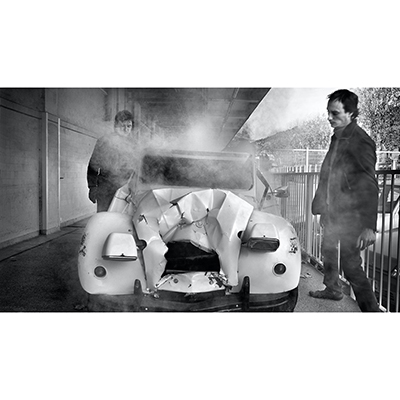
Florian Pugnaire & David Raffini
L’Onde, 2017
Leur duo est marqué par la problématique de la sculpture comme « work event » et également par un penchant pour l’avenir des objets industriels. L’Onde évoque le retentissement d’une onde de choc. La première tôle arbore en son centre un impact produisant une violente déformation de la matière. « L’onde » n’est pas simplement une image arrêtée, mais la représentation d’une période dans l’espace. A hauteur d’homme, elle matérialise une distance parcourue dans un temps donné, ou l’inverse.
Their duo is marked by the problematic of sculpture as a work event and by a penchant for the future of industrial objects. L’Onde evokes the reverberation of a shock wave. The first sheet has an impact in its center that produces a violent deformation of the material. The “wave” is not simply a still image, but the representation of a period in space. At human height, it materializes a distance travelled in a given time, or the opposite.

Stefan Rinck
Mistral Boys, 2021
Les figures de pierre de Stefan Rinck composent une population bigarrée et comique, d’animaux pour la plupart, chimères ou monstres, costumés, masqués et dotés d’attributs. Cette assemblée discordante de non-humains provient d’un imaginaire archaïque, tissé de mythes et de légendes. De ces figures grotesques l’on reconnaît le comique vitaliste, typique du réalisme médiéval, qui s’exprimait lors de fêtes religieuses et populaires.
Stefan Rinck’s stone figures form a motley and comical community of animals, chimeras and monsters, wearing costumes, masks and are endowed with particular symbols. This assembly of non-humans is coming from an archaic imaginary world, woven from myths and legends. From these grotesque figures, we recognize the vitalist comedy typical of medieval realism which could be observed during the parades of religious and popular festivities.

Kevin Rouillard
Jaune 2021, 2021
Essentiellement sculpturale, la pratique de Kevin Rouillard est inscrite dans un processus de prélèvement et de récupération, qui questionne d’une part le contexte d’émergence des formes qu’il récupère, et d’autre part les conditions d’apparition des œuvres qu’il crée. Ses grands assemblages de panneaux métalliques, carcasses de bidons brûlés et dépliés, sont pour lui une manière d’évoquer le monde ouvrier et la circulation des biens à travers le monde.
Essentially sculptural, Kevin Rouillard’s practice is set in a process of sampling and recuperation, which questions on the one hand the context of the emergence of the forms that he gathers and, on the other, the arrival context of the works he creates. His large assemblages of metallic panels and the carcasses of burnt, flattened canisters are, for him, a way to evoke the world of workers and the circulation of goods throughout the world.
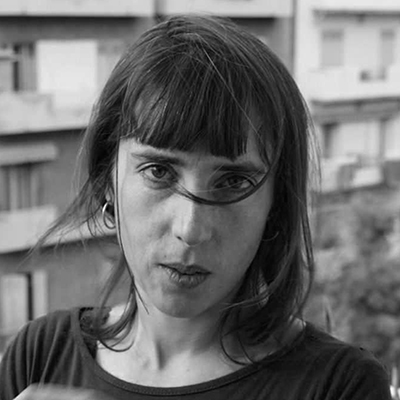
Linda Sanchez
L’autre, 2017
L’autre appartient à une série de pièces qui interroge non seulement la construction et le paysage mais aussi l’architecture du geste. Suivant une partition de gestes, tel un script, neuf colonnes sont construites par strates, exactement de la même manière. Motifs colorés, quantité de matériau, pente, mais aussi inclusions, lignes de fracture, points de fragilités sont reproduits à l’identique. En conséquence, poussées au sol, les neuf colonnes se cassent et s’érodent aussi de la même manière.
The Other belongs to a series of pieces that question not only construction and landscape but also the architecture of gesture. Following a score of gestures, like a script, nine columns are built in layers, in the same way. Coloured patterns, quantity of material, slope, but also inclusions, fracture lines, points of fragility are reproduced identically. As a result, when pushed to the ground, the nine columns break and erode in the same way.
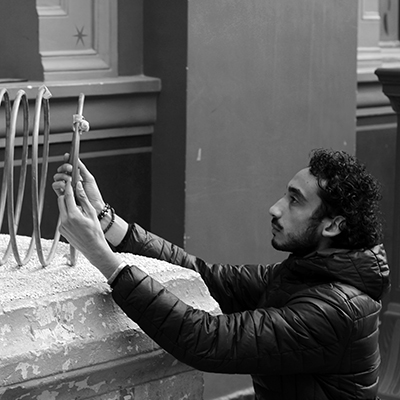
Pierre-Alexandre Savriacouty
O-3, 2021
Au début du XVIe siècle des ouvertures sur la façade de l’église de Saint-Paul de Vence furent construites. Au XVIIIe, ces mêmes voies furent refermées. Pensé comme un don au village, l’artiste a dupliqué cette ancienne porte et propose une réouverture de ce passage. Explorant le potentiel de cet espace temporel, il fait appel aux propriétés de la matière à pouvoir se régénérer, survivre et développer des formes instinctives et immémoriales.
In the early 16th century, openings were made in the wall of the church of Saint-Paul de Vence. In the 18th century, these same openings were closed back. As a gift to the village, the artist has duplicated this ancient door and proposes a reopening of this passage. Exploring the potential of this temporal space, he invokes the properties of matter to be able to regenerate, survive and develop instinctive and immemorial forms.
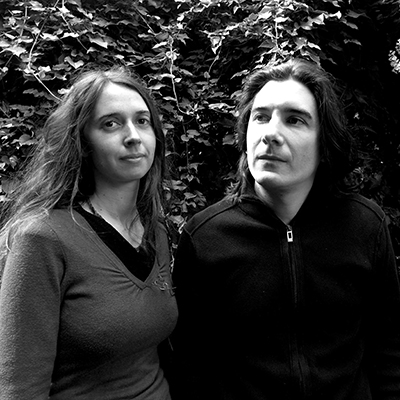
Scenocosme :
Grégory Lasserre & Anaïs met den Ancxt
Phonofolium, 2011
Le couple d’artistes Scenocosme travaille sur des hybridations possibles entre végétal et technologie numérique. Phonofolium est une œuvre interactive présentant un arbuste qui réagit au moindre contact électrostatique humain par des sonorités. Lorsqu’une personne caresse l’arbuste, celui-ci se met à chanter en fonction de la proximité du contact. En mêlant réalité et imaginaire, cette œuvre propose une expérience sensorielle qui questionne nos relations énergétiques invisibles avec les êtres-vivants.
The artist couple Scenocosme works on possible hybridisations between plants and digital technology. Phonofolium is an interactive work presenting a shrub that reacts to the slightest human electrostatic contact with sounds. When a person strokes the shrub, it starts to sing according to the proximity of the contact. By mixing reality and imagination, this work offers a sensory experience that questions our invisible energetic relationships with living beings.
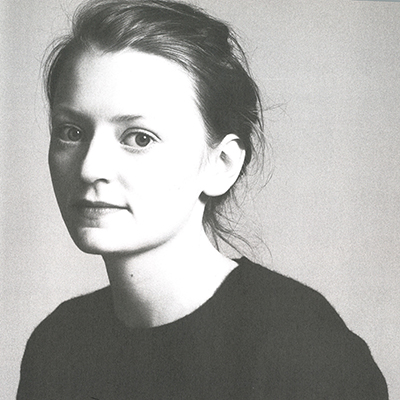
Elodie Seguin
Unité de lieu, 2021
Les œuvres d’Elodie Seguin résultent d’un processus long et permanent de recherche pour trouver leur finalité au moment de l’exposition. A quelques mètres d’un cimetière, sa proposition prend la forme d’un volume transparent en plexiglass aux dimensions d’un corps, enterré devant un olivier, entre le paysage et le chemin de ronde de la ville. La fusion de ce matériau artificiel et du sol terreux signe le vocabulaire d’Elodie Seguin comme une idée, comme un non-objet en réponse à l’existant.
Elodie Seguin’s artworks result from a long and continuous process and find their final form for the moment of the exhibition. A few meters from a cemetery, her proposal appears as a transparent volume in plexiglass and is sized like a human body. Her artwork is buried in front of an olive tree, between the landscape and the village’s covered way. The fusion of this artificial material and the earthy soil is a print of Elodie Seguin’s vocabulary. As an idea and a non-object, this is a response to the existing.

Charlotte vander Borght
Mass V, 2020
Le travail de Charlotte vander Borght est essentiellement sculptural. Les sculptures de la série MASS sont toutes réalisées à partir de panneaux de dibond produits dans les années 70, récupérés d’une façade d’un immeuble moderniste parisien. Initialement industriels, Charlotte vander Borght les a refaçonnés, réimaginés et peints afin d’invoquer leur charge émotionnelle comme d’une mémoire affective et collective ancrée dans la matière, oscillant entre abstraction et figuration.
Charlotte vander Borght’s practice is essentially sculptural. Each sculpture in the MASS series uses 1970s dibondpanels salvaged from a facade of a modernist building in Paris. Hovering between abstraction and figuration, Charlotte vander Borght has repurposed, reshaped and painted these initially industrial panels in order to elicit their emotional power, to expose the affective and collective memory that is latent in materials.
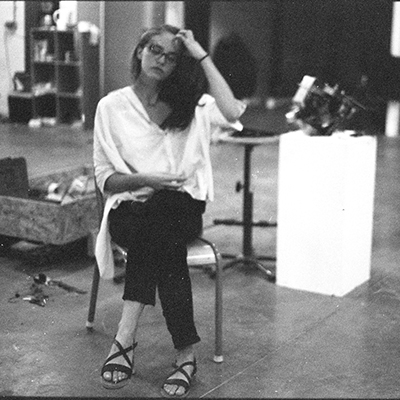
Delphine Wibaux
Témoin souple, cimes, 2021
Delphine Wibaux met au point ce qu’elle nomme des «captations» en utilisant différents médiums. Attentive aux signaux faibles, elle cherche de manière sensible à redonner du
sens et de la perception à l’égard du vivant. Déposée sur les graviers, cette sculpture dialogue avec deux arbres gardiens – rhizomes de ce jardinage inédit. L’image révèle la cime d’un arbre ou de racines, en intime relation avec les fossiles présents au sein du calcaire.
Delphine Wibaux develops what she calls “captures” using different media. Attentive to weak signals, she seeks in a sensitive manner to restore meaning and perception to the living.
This sculpture imagined for BIS, called “Témoin souple” and placed on the gravel, dialogues with two guardian trees – rhizomes of this new gardening. The image reveals the top of a tree or roots, in intimate relation with the fossils present within the limestone.
